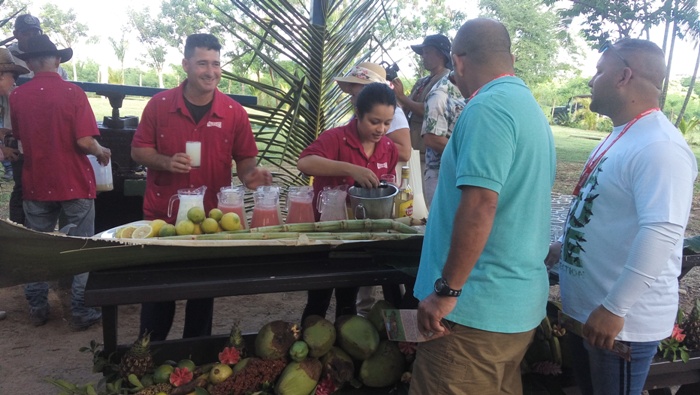TRINIDAD, CUBA
Local Development from Creative Economies

Trinidad is
located in the central Cuban province of Sancti Spíritus, with
a population of more than 730,000. Together with the
nearby Valle de los Ingenios (Valley of the Sugar Mills), they formed the
centre of the country's sugarcane industry from the late 18th century to the
late 19th century. The gradual decline and final collapse of Cuba's sugar industry has propelled Trinidad to look for new
development opportunities. These have turned out to be tourism and the creative
industries. This initiative is a collaboration between Trinidad and the rural
towns in the Valley of the Sugar Mills and comes with two components.
The first component focuses on development of the area's agriculture and culinary culture. Though the area is characterised by its unique cuisine and extensive network of gastronomic services, crop production is low – a legacy of the centuries-long sugarcane planting practice. This translates into food insecurity as well as wasted potentials in gastronomic and tourism development. With this project, the city aims to help develop a healthy and ecological agriculture and connect the farms in the valley with the tables in the city, creating sources of income for the urban and rural populations. So far, traditional local recipes have been included in the menu of 98 restaurants and food production has reached about 10 kilograms per capita. The city is also developing cultural travel routes and organising gastronomic and agricultural events, to sustain the success.
The second project started in a city
street and has been replicated to the rural towns. It focuses on recovering the
textile handicraft practices and renovating houses of cultural characteristics
with traditional construction techniques. So far, more than 1,000 craftspeople
have been employed in the project, and over 160 houses have been renovated. It
is also worth mentioning that socially-disadvantaged groups are
prioritised for such housing interventions.
The initiative has benefited some 3,000 residents, especially so for housewives. As they are usually the ones that do the cooking and make the handicrafts, the initiative has helped the women play a bigger role in their family economy, which often translates to improved status.
In addition, today, around half of the
tax revenue comes from the creative industries.
This initiative supports the achievement of Goal 1 (no poverty), Goal 2 (zero hunger), Goal 3 (good health and well-being), Goal 5 (gender equality), Goal 8 (decent work and economic growth), Goal 10 (reduced inequality), and Goal 11 (sustainable cities and communities) of the SDGs.


 In Focus | International Day of Families: Family-Oriented Policies for Sustainable Development
In Focus | International Day of Families: Family-Oriented Policies for Sustainable Development City Stories | How human-centred cities address multidimensional poverty and build urban resilience in Latin America
City Stories | How human-centred cities address multidimensional poverty and build urban resilience in Latin America In Focus | Earth Day: Our Power, Our Planet
In Focus | Earth Day: Our Power, Our Planet




















 Tel: +86 20 3780 4434
Tel: +86 20 3780 4434 Email: info@guangzhouaward.org
Email: info@guangzhouaward.org Address: Rm 1609, FuLiXinTianDi, No.307 Guangzhou Dadao Zhong, Yuexiu District, Guangzhou, Guangdong, 501600, PRC
Address: Rm 1609, FuLiXinTianDi, No.307 Guangzhou Dadao Zhong, Yuexiu District, Guangzhou, Guangdong, 501600, PRC




